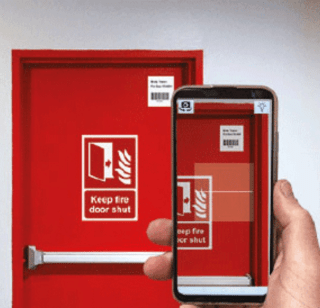The Government Has Reacted to The Safety Needs of Fire Doors

Fire Door Testing
Fire Door Inspection legal requirements. Your Fire Doors needs to be inspected twice a yearly by a Fire Technician in accordance with British Standard 5839-1:2013.
Article 17 of the Regulatory Reform (Fire Safety) Order 2005 (RRO/FSO) makes it a legal requirement to ensure that fire resisting doors and escape doors are correctly installed and adequately maintained in order for them to be fit for purpose.
The Regulatory Reform (Fire Safety) Order 2005, often referred to as the RRO or FSO, applies to all buildings other than domestic housing, and replaces 118 pieces of previous fire legislation, including the old fire certificate. The law now shifts responsibility from the fire authorities for fire safety to whoever has day-to-day control of premises.
The authorities have the power to enforce the RRO/FSO and do prosecute or even close buildings down where breaches are discovered.
Fire Door Inspection
The regular use of a fire door can cause movement to the doors hinges and its surroundings. This may affect the performance of the door from a fire safety aspect.
Regular inspection by a qualified person, will identify any door defects and advice will be given for the necessary works that need to be carried out.
Fire Door Performance Is Key To Safety
Fire door inspection is key to ensure the safety of your business. In most cases a twice yearly inspection is required to maintain the effectiveness of the door. Wear and tear is the reason inspection is required.
While twice yearly inspections are a recommendation by BS 9999. It is also important that you carry out daily and monthly visual inspections to check for problems.
Daily checks should include visual inspection of and testing of automatic release mechanisms.
Monthly checks include: testing the fail-safe mechanisms for automatic doors; testing the operation of hold-open devices under a simulated loss of power or fire alarm; and testing the correct operation of panic hardware on emergency and panic doors.
Regular inspections and checks need to be recorded and dated by the responsible person. Maintenance of the faulty doors must be carried out as a priority with the repair being recorded.
Standard Checklist
1. Are your fire doors certificated (label or plug)?
2. Are the gaps between the leaf and frame 3mm (+/- 1mm)?
3. Are the intumescent/cold smoke seals damaged or missing?
4. Are the hinges all firmly fixed with no screws missing?
5. Do all handles and panic hardware operate correctly?
6. Are the doors able to close in a controlled manner and are they free from obstruction?
7. Do door selectors operate correctly?
8. Is the glass secure in the frame?
9. Do the doors display the correct signage and is it legible?
10. Have your doors been inspected by a trained industry professional?
Finally if the leaf is a FD it’s low threshold gap (bottom rail) can be no greater than 8mm, and if the leaf is a FD(30/60)S, it’s low threshold gap can be no greater than 3mm.
Find Out More about Fire Services Central Ltd
Contact our Fire System Installation and Maintenance team by email or call us today on 0121 525 1976 to discuss your fire extinguisher servicing needs.
Call us on: 0121 525 1976
We’d love To Do Business With You!
Contact us for your Fire Safety Requirments
We offer a nationwide service on fire extinguisher servicing, fire alarm servicing, fire extinguisher installation and fire alarm installation.
Head Office: Unit 25 Izons Ind Est,Oldbury Road,Birmingham B70 9BS.
Phone: 0121 525 1976
Email: info@fire.uk.net

